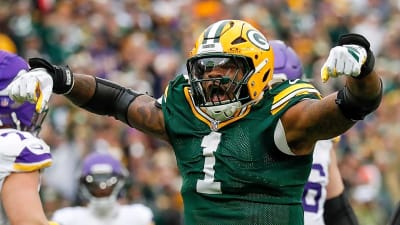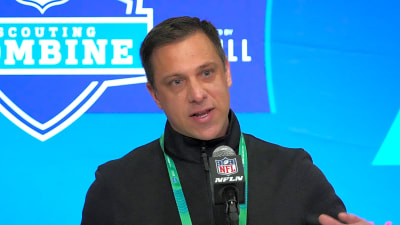
Welcome back to another edition of NHL Predictions from the team at Last Word on Hockey. Each day we break down the matchups and give you insight into projected outcomes using advanced stats and betting analysis. Tonight’s interconference matchup features the Anaheim Ducks hosting the Pittsburgh Penguins.
NHL Predictions
Pittsburgh Penguins vs Anaheim Ducks
2025-26 Head-to-Head: Penguins 0 – 0 Ducks
Time: 7:30 p.m. Pacific Daylight Time (PDT) (4:30 p.m. Eastern Daylight Time)
How to Watch – TV: KTTV, Victory+, SN-PIT, ESPN+
Location: Honda Center in Anaheim, California
Matchup Overview
The Anaheim Ducks (1–1–0) return to Honda Center for their home opener on Monday night, hosting the Pittsburgh Penguins (2–1–0) in a clash of teams eager to build early momentum. Anaheim is fresh off a thrilling 7–6 overtime win in San Jose, where Leo Carlsson and Cutter Gauthier led a late rally that hinted at the club’s offensive ceiling under new coach Joel Quenneville. Pittsburgh enters looking to rebound from a 6–1 home loss to the Rangers, a result that snapped their two-game winning streak and revealed some early power play inconsistencies. With both teams boasting elite top-six talent and strong underlying metrics, the spotlight turns to the goaltending matchup between Lukas Dostal and Tristan Jarry. Whether Anaheim can channel the energy of its first home crowd into a statement win, remains to be seen.
Pittsburgh Penguins Storyline
The Pittsburgh Penguins (2–1–0) look to rebound after a humbling 6–1 home loss to the New York Rangers on Saturday, a night marked by former head coach Mike Sullivan’s emotional return. The defeat snapped a two-game winning streak to open the season, but rookie Benjamin Kindel provided a silver lining by scoring his first career goal, becoming the youngest Penguin to do so since Jordan Staal in 2007. Coach Dan Muse downplayed the loss, reminding that it’s early and his group’s structure will tighten with time. Veterans Sidney Crosby, Evgeni Malkin, and Jake Guentzel were held without a point against New York, but the trio remains one of the NHL’s most dangerous units when given space to operate.
Pittsburgh’s underlying play suggests a more balanced team than the scoreline indicated. The Penguins hold a 51.2% expected goals share and a 52.8% scoring chance percentage at five-on-five (via Natural Stat Trick), meaning they’re creating slightly better looks than their opponents are on most nights. Their power play sits at 20% early, with puck movement and zone entries still a work in progress. Goalie Tristan Jarry is expected to start after Arturs Silovs struggled in the loss, giving Pittsburgh the steadier half of its tandem. Despite the uneven outing against the Rangers, Muse’s team has shown a strong ability to push back after losses. This is a trait that should serve them well heading into Anaheim.
Pittsburgh goal!Scored by Justin Brazeau with 05:39 remaining in the 3rd period.Assisted by Evgeni Malkin and Anthony Mantha.Pittsburgh: 4New York: 3#NYIvsPIT #LetsGoPens #Isles
— NHL Goals (@nhlgoals.bsky.social) 2025-10-10T01:38:00.989149Z
Anaheim Ducks Storyline
The Anaheim Ducks (1–1–0) arrive home fresh off a thrilling 7–6 overtime win over the San Jose Sharks, marking coach Joel Quenneville’s first victory behind the bench. Anaheim’s young core continues to show flashes of brilliance, led by Leo Carlsson, who recorded three points including the overtime winner. Chris Kreider tied the game with his second of the night in the final minute, while Cutter Gauthier added two goals and Mason McTavish chipped in three assists. The Ducks’ top six combined for 13 points, giving early life to a revamped offensive structure that emphasizes aggressive puck pursuit and inside pressure.
Underneath the scoring fireworks is a quietly strong possession game. Through two contests, Anaheim ranks near the top of the league in most even-strength shot metrics. Their 62.8% Corsi-For and 65.0% expected goals share (via Natural Stat Trick) show that their offence has controlled play far more than their record suggests. The Ducks have also generated nearly 70% of all high-danger chances, a number that reflects how frequently their young forwards are getting to prime scoring areas. Goaltending remains a question early. To that point, Petr Mrazek allowed six goals in San Jose. In contrast, Lukas Dostal is expected to return in net and stabilize things. Anaheim’s 40% power play has been one of the league’s best, converting in both games and serving as a major weapon for a team still finding its defensive footing.
TOUCHDOWN
Leo Carlsson scores in /Energizer overtime to give the /AnaheimDucks the 7-6 win! #NHLFaceOff
— NHL (Bot) (@notnhl.bsky.social) 2025-10-12T04:52:55.426456Z
NHL Prediction
When these two teams meet in Anaheim, the matchup hinges on whether Pittsburgh’s structure can contain Anaheim’s newfound pace. The Penguins are still running their offence through the familiar triangle of Sidney Crosby, Evgeni Malkin, and Kris Letang, but the secondary scoring from Justin Brazeau and Drew O’Connor has been a pleasant surprise. On the other side, Anaheim is beginning to flash the creative, layered attack Joel Quenneville envisioned a mix of controlled entries and net-front chaos led by Mason McTavish and Cutter Gauthier.
Our blended prediction model simulates the game 100,000 times, weighting three independent sources equally:
- Advanced Hockey Stats: Penguins 59%, projected score 3.8–3.2
- MoneyPuck: Ducks 59.8%
- Sportsbook implied odds: Ducks −155, Penguins +130
After averaging across models and running the distribution, Anaheim emerges with a 53.9% win probability, Pittsburgh at 46.1%. The most common simulated final scores cluster tightly around 4–3 Anaheim or 3–2 Anaheim, with roughly 58% of total runs finishing between five and seven goals.
When we visualize those simulations, Anaheim’s win probability curve skews slightly right. Thus meaning they’re favoured, but only modestly so, and the long tail of outcomes includes plenty of tight, low-event contests driven by goaltending variance. The Ducks’ power play (currently 40%) acts as the single biggest differentiator. The model projects Anaheim to win the special teams battle in 62% of runs, largely due to Pittsburgh’s early-season penalty kill sitting under 80%.
Ultimately, Anaheim’s speed and inside pressure at home, combined with Lukas Dostal’s rebound control, give them just enough edge to overcome Pittsburgh’s veteran discipline. Expect a fast start from Anaheim, some late pushback from Crosby’s line, and a close finish where special teams decide it.
NHL Prediction: Ducks win 4–3 (54% win probability).
Prop bets of the night
We close out our NHL Prediction with prop bets of the night. We rebounded in a big way last game, cashing both props to move to 2–3 (−1.08 units) on the season. Look at the Ducks team total over 3.5 Goals (+100). In 100,000 simulated runs, the Ducks scored four or more goals in 56% of outcomes. With balanced scoring across the team, the Ducks’ forward depth gives this over real bite. Also, consider Ducks power play goals 1+ (−125). Through two games, Anaheim owns a 40 percent power play conversion rate and continues to funnel pucks through the bumper slot and net-front screens. Our model gives the Ducks at least one power-play goal in 64% of simulations, The combination of a red-hot top unit and a Pittsburgh PK still settling into new structure under Dan Muse makes this a strong correlation play with the team-total over.
Both props lean on the same theme. That is, the Anaheim special teams’ advantage and offensive volume are too consistent to fade. The simulations envision a game with sustained zone time, heavy shot pressure, and a Ducks side capable of converting those chances into four or more goals.
2025-2026 Season Betting Record: 2–3 (-1.08 units)
Please play responsibly, check for your local rules and age restrictions; some jurisdictions require ages 21+. Gambling problem? Call 1-800-GAMBLER.
More must-reads:
- Oilers' Tristan Jarry leaves with injury
- 'Heartbroken beyond words': Remembering Greg Biffle, NASCAR's underappreciated star
- The 'NFL's active TD-catch leaders' quiz
Customize Your Newsletter
 +
+
Get the latest news and rumors, customized to your favorite sports and teams. Emailed daily. Always free!








